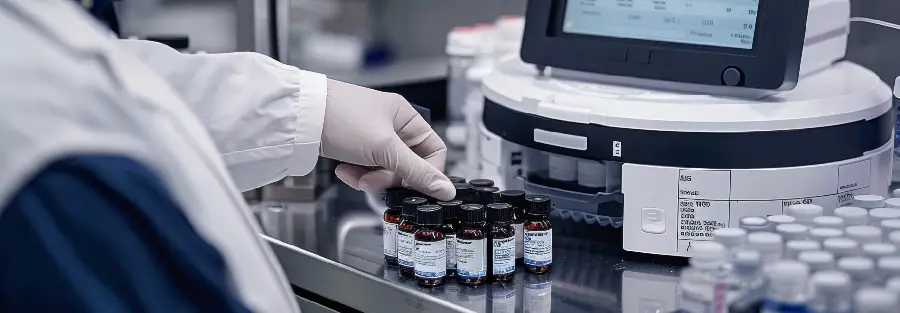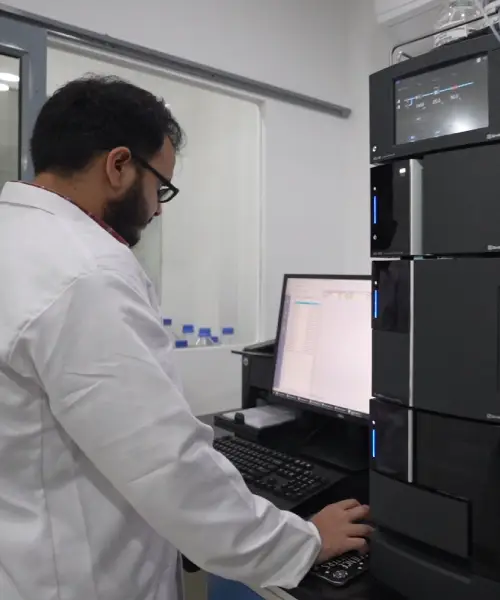
API Pharma
The journey of a medicine from API to formulation is one of the most crucial processes in the pharmaceutical industry. It ensures that the therapeutic potential of an active ingredient is transformed into a safe, effective, and patient-friendly dosage form. This pathway involves not only the science of drug discovery but also strict regulatory compliance, precision engineering, and quality control.
Pharmaceutical companies, especially global CDMOs (Contract Development and Manufacturing Organizations), play a pivotal role in guiding drugs through this journey. From initial API Manufacturing to the final marketed product, every stage impacts patient safety and global healthcare outcomes.
Brief Overview of High-Value CDMO Services
CDMOs provide integrated solutions across the entire drug development chain. These include API synthesis, formulation development, clinical trial material supply, regulatory documentation, and commercial manufacturing. For innovators and generic companies alike, CDMO partnerships streamline the path from API to formulation, ensuring efficiency, compliance, and scalability.
High-value CDMO services are essential because they:
- Provide specialized expertise in both chemistry and formulation sciences.
- Reduce time-to-market through integrated development.
- Guarantee global regulatory compliance (FDA, EMA, PMDA, WHO, etc.).
- Offer scalability from lab-scale to commercial manufacturing.
What is an API (Active Pharmaceutical Ingredient)?
An API is the biologically active substance in a drug that produces the intended therapeutic effect. For example, paracetamol is the API in pain-relieving tablets, while insulin is the API in diabetes treatments. APIs are the cornerstone of every drug, and without them, formulations are simply inactive carriers.
The API to formulation journey begins with the careful design and synthesis of APIs that are safe, effective, and stable.
Importance of High-Quality APIs
The quality of an API directly determines the effectiveness of the final medicine. A high-quality API must demonstrate:
- Purity – Free from harmful impurities and contaminants.
- Stability – Able to withstand storage and environmental conditions.
- Consistency – Uniform quality across every batch.
Without these attributes, the transition from API to formulation cannot meet regulatory or therapeutic standards.
API Manufacturing Process
The API Manufacturing process is highly complex, involving advanced chemistry, biotechnology, and engineering. APIs are produced either through chemical synthesis or biological processes (fermentation or cell culture). Once synthesized, APIs undergo multiple purification steps to remove by-products and ensure compliance with pharmacopeial standards.
Steps in API Manufacturing
The critical stages in API production include:
- Chemical/Biological Synthesis – Creation of the active molecule using raw materials or biological systems.
- Isolation – Separating the desired molecule from reaction mixtures.
- Purification – Removing impurities using chromatography, crystallization, or distillation.
- Testing – Ensuring quality, potency, and safety through analytical methods.
- Regulatory Compliance – Meeting FDA, EMA, and WHO guidelines before market approval.
Each of these steps is vital for a smooth transition from API to formulation.
Transition from API to Formulation
APIs alone cannot be consumed directly. They are often unstable, highly potent, or difficult for the body to absorb. Hence, APIs are transformed into formulations—dosage forms that patients can safely take, such as tablets, capsules, injectables, or ointments.
This API to formulation step ensures that medicines are not only effective but also safe, convenient, and acceptable for patients worldwide.
Role of Excipients in Formulation
Excipients are the “silent partners” in any medicine. They:
- Stabilize the API during storage and administration.
- Control the release of the drug in the body.
- Improve taste, texture, or appearance.
- Enhance bioavailability (how well the body absorbs the API).
Without excipients, the journey from API to formulation would not be possible.
Common Dosage Forms
The transition from API to formulation results in several dosage forms, including:
- Tablets and Capsules – The most common oral dosage forms.
- Syrups and Suspensions – For pediatric and elderly patients.
- Injectables – For rapid or targeted drug delivery.
- Topical Ointments and Creams – For localized treatment.
Each form is designed to maximize therapeutic benefit while ensuring patient comfort.
Pharmaceutical Formulation Process
Formulation involves combining APIs with excipients under strict guidelines to create a stable, safe, and effective product. This process focuses on optimizing:
- Stability under different environmental conditions.
- Dosage accuracy and uniformity.
- Patient-friendly administration routes.
Here, the API to formulation link becomes critical in determining how effectively the drug will perform in real-world use.
Key Stages of Formulation Development
The main stages in formulation include:
- Pre-formulation studies – Examining API properties like solubility and stability.
- Excipent selection – Choosing safe, compatible excipients.
- Dosage form design – Creating tablets, capsules, injectables, etc.
- Optimization – Ensuring bioavailability and patient compliance.
- Validation – Demonstrating safety, stability, and efficacy.
API and Formulation: The Critical Link
APIs and formulations are inseparable. High-quality APIs ensure strong therapeutic potential, while excellent formulations guarantee safe and efficient delivery. Together, they form the backbone of modern medicines, making the API to formulation journey central to global healthcare.
From Lab to Market
The complete pharmaceutical journey—from early discovery, API Manufacturing, formulation development, clinical trials, to global distribution—can take years. CDMOs accelerate this process by combining scientific expertise with regulatory knowledge, ensuring that patients receive life-saving medicines faster.
Regulatory Compliance in API to Formulation
Global agencies like the US FDA, EMA, PMDA, and WHO regulate every step of the API to formulation journey. Detailed documentation, stability data, and validation reports are mandatory to ensure that drugs are safe, effective, and consistent.
Challenges in Scaling Production
Moving from lab-scale to global production presents major challenges:
- Maintaining quality and consistency across large volumes.
- High costs of equipment, compliance, and raw materials.
- Meeting strict global regulatory requirements.
CDMOs overcome these hurdles by investing in advanced manufacturing technology and global expertise.
Future Trends in API to Formulation
The pharmaceutical industry is evolving rapidly. Future trends include:
- Automation and AI – For faster, error-free processes.
- Continuous manufacturing – Reducing costs and time.
- Personalized medicine – Tailoring formulations to individual patients.
- Green chemistry and sustainability – Reducing waste and environmental impact.
These innovations will redefine the journey of API to formulation, making medicines safer, faster, and more accessible worldwide.
Conclusion: Advancing Global Healthcare
The path from API to formulation is the backbone of modern medicine. From the discovery of active molecules to creating safe, patient-friendly dosage forms, every step is critical in delivering life-saving treatments. High-quality APIs, robust formulation strategies, and global compliance ensure that patients around the world receive effective and affordable medicines.
As innovation continues, the seamless integration of APIs and formulations will remain the driving force behind global healthcare advancements.






